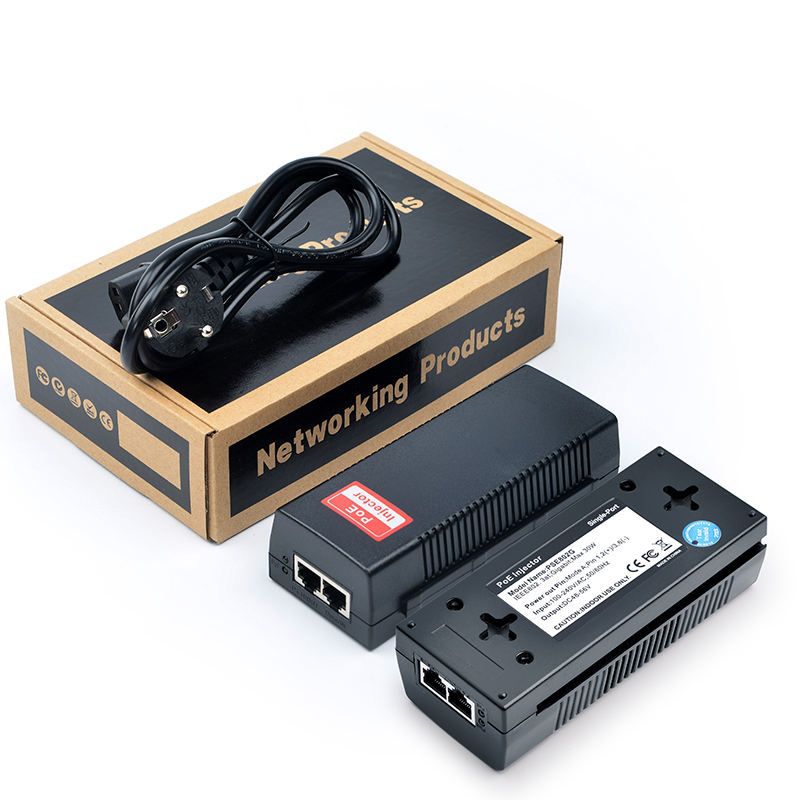Is A PoE Injector necessary?
A PoE injector is a device that enables you to transmit both power and data through a single Ethernet cable. It eliminates the need for separate power cables, making installations much neater and more convenient. You can use a PoE injector to power various devices such as IP cameras, wireless access points, VoIP phones, and more.
When it comes to installing an IP camera using a PoE injector, it’s quite straightforward. First, connect the PoE injector to your network switch or router using an Ethernet cable. Then, connect the IP camera to the PoE injector using another Ethernet cable. The injector will provide power to the camera while simultaneously transmitting data, allowing you to easily set up and power your IP camera without any hassle.
As for choosing the best PoE injector for your needs, it depends on your specific requirements. Factors like the number of devices you need to power, the power output required, and the distance between the injector and the devices should be considered. Some popular PoE injector brands include Ubiquiti, TP-Link, and Netgear. Reading reviews and comparing specifications can help you find the perfect match for your setup.

What is a PoE Injector?
A PoE injector, short for Power over Ethernet injector, is a device that allows you to deliver power and data simultaneously to Ethernet-enabled devices over a single Ethernet cable. It eliminates the need for separate power cables, simplifying installations and providing flexibility in device placement.
The PoE injector has two Ethernet ports. One port connects to your network switch or router, while the other port connects to the device you want to power, such as an IP camera, wireless access point, or VoIP phone. The injector injects power into the Ethernet cable, and the device receives power and data through that cable.
It’s a convenient solution in situations where power outlets may not be readily available near the device you want to power. With a PoE injector, you can power devices remotely, extend cable distances, and reduce clutter caused by multiple cables.
PoE injectors come in various power output options, so you can select the one that matches the power requirements of your device. They also support different PoE standards, such as PoE, PoE+, and PoE++ (also known as 802.3af, 802.3at, and 802.3bt, respectively), enabling compatibility with a wide range of devices.
Do You Need a PoE Injector?
Whether you need a PoE injector depends on your specific circumstances and requirements. Let’s consider a few factors to help you determine if a PoE injector is necessary for your setup:
Power and Data Integration: If you have Ethernet-enabled devices that require both power and data connectivity, using a PoE injector can be highly beneficial. It consolidates power and data transmission into a single Ethernet cable, simplifying installation and reducing cable clutter.
Remote Device Placement: If your devices need to be installed in locations where power outlets are not easily accessible, a PoE injector can be a practical solution. It allows you to power devices remotely through the Ethernet cable, eliminating the need for AC power sources near the devices.
Cost and Convenience: Using a PoE injector can save you the expense and effort of running separate power cables to your devices. It provides flexibility in device placement, allowing you to position them wherever needed without worrying about power availability.
PoE Compatibility: Ensure that your devices support Power over Ethernet. Not all Ethernet-enabled devices are PoE-compatible, so check the specifications of your devices to confirm if they can receive power through an Ethernet cable.
If your devices meet the criteria mentioned above, a PoE injector can be a valuable addition to your setup. It streamlines installations, reduces costs, and offers flexibility in device placement. However, if your devices already have built-in PoE capabilities or if power outlets are easily accessible where your devices will be located, you may not necessarily require a PoE injector.
When you are running through a standard PoE switch, you will not need the power connection. In this case no injector is needed. If you have a switch that is not PoE capable, you will need to find an alternate way to power the IP camera as non-PoE switches do not deliver power to PoE devices.

